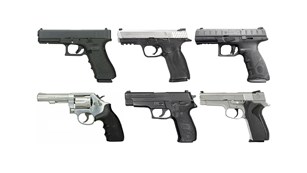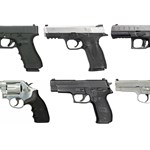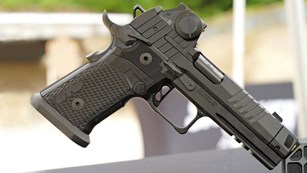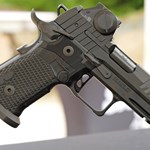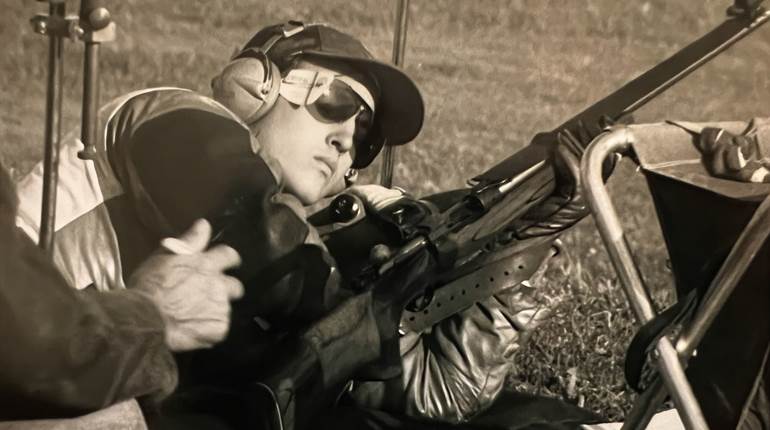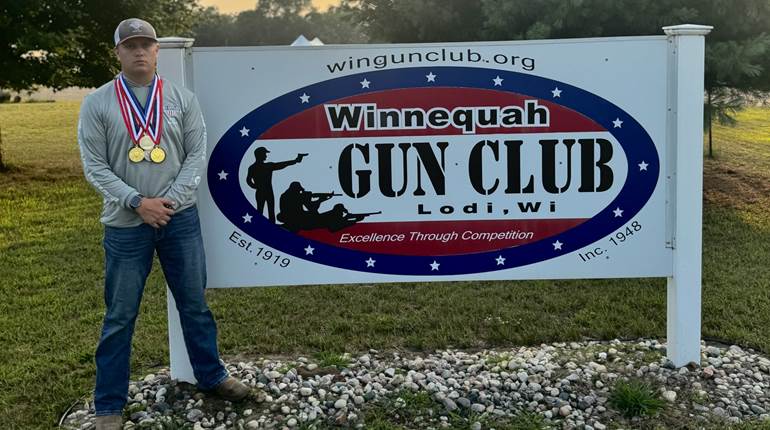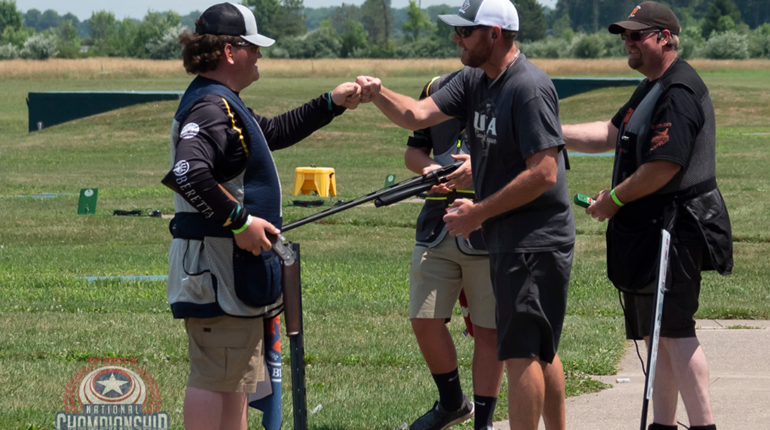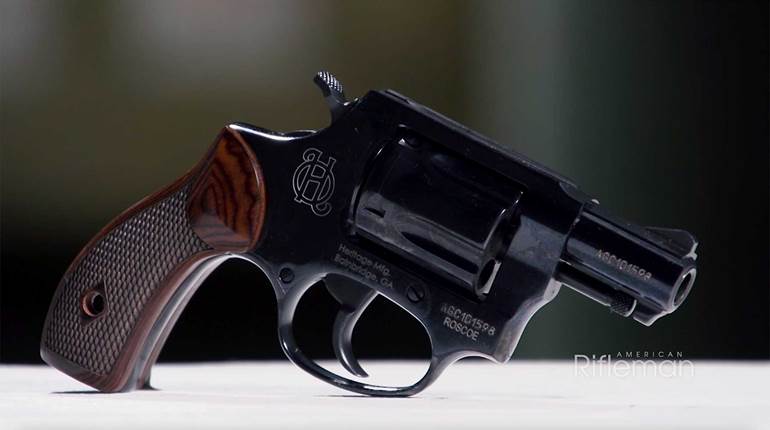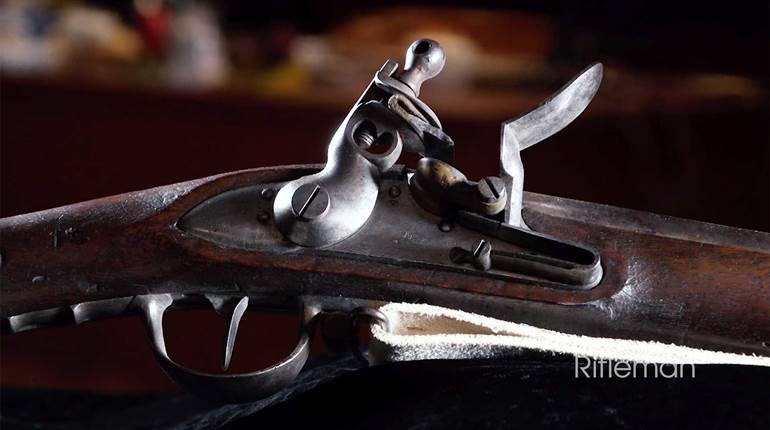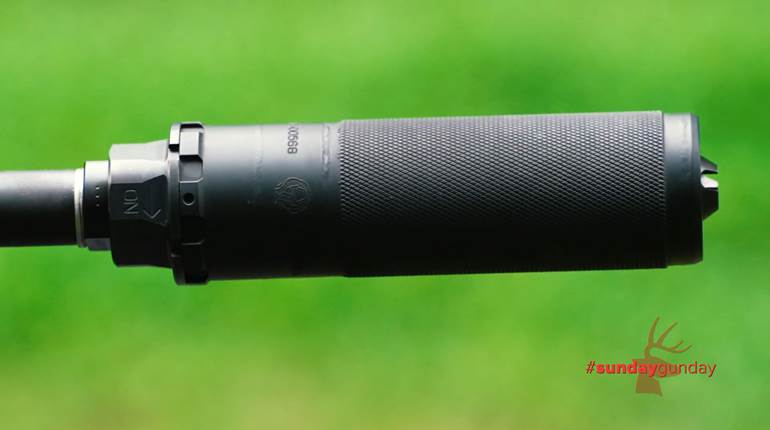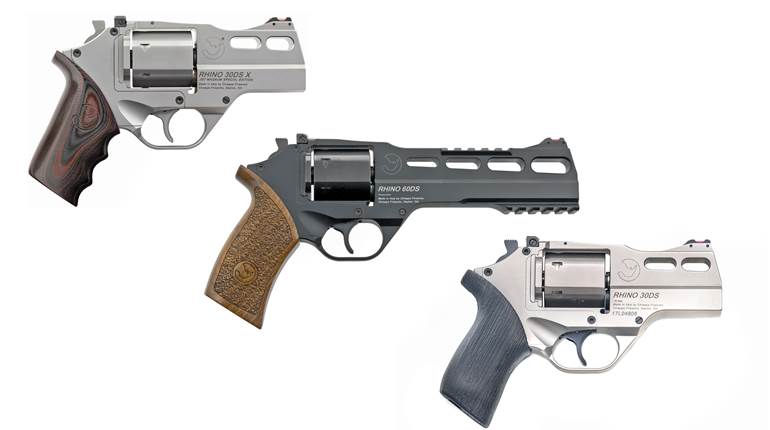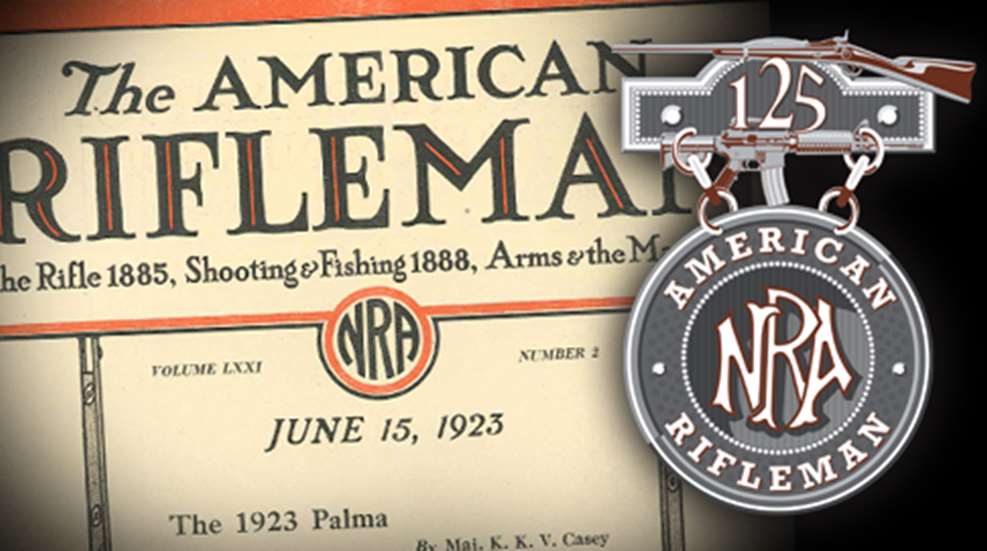
From the September 15, 1921 issue of American Rifleman
Aside from the thrill which accompanied the making of such marksmanship history was witnessed at Camp Perry, there were several outstanding features of the N.R.A. Individual Matches which will long live in the memories of riflemen.
One is the shooting of Sergeant John W. Adkins of the Marines, who established new records at 900 and 1,000 yards; won the Wimbledon, the Western Cartridge Company and the Remington Arms Company Matches; and in a single day’s shooting ran two strings totaling 211 bull’s-eyes. It is doubtful if ever before there has been such a hard holder as Adkins.
Another is the shooting of George R. Farr, the Washington riflemen, who, although sixty-two years of age, took a service rifle which had been issued to him the morning of the match, and with service sights and the new Frankford Arsenal machine-made “Tin Can” bullet, entered the Wimbledon and gave Adkins, with his special rifle and telescope sight, the closest call that the young Marine had in all of his string of victories.
The race between Farr and Adkins was one of the most dramatic that any rifle range has ever seen. The old civilian came to the firing line with what sixty-two years of life had left him and an equipment that he had been able to draw from the government. Adkins came with the zest and the strength of his prime, armed with special equipment. The battle which followed between indomitable age and splendid youth will long be remembered. Those who watched the old man firing against the handicaps of gathering darkness and an equipment supposedly inferior to that of his opponent, while giving full credit to Adkins for his superb skill, may still wonder who actually won the great silver cup that rests upon the haunches of couchant lions and which was presented to American riflemen to be awarded yearly to the champion long-range rifle shot.
Caption: “Dad” Farr, who returned from a pack-sack trip in the Olympic Mountains in time to come to Camp Perry and make the most sensational record of a sensational shoot.
After the light had already gone bad, but before Adkins had finished his string, a man whose thick silver hair betrayed a life longer than three-score years, walked across the field to the Wimbledon firing line. His khaki shirt and dungarees bore no team insignia. As he carried a modest improvised shooting bag and his rifle to the firing point, he appeared to be only one of the many old fellows whose team mates instinctively christen “Dad.” But the shoulders of his angular body, the glint of his bright blue eyes, surrounded by those tiny wrinkles that are penciled on the faces of outdoors men from gazing overlong at great distances and the firm, smiling mouth under the close-cropped mustache, might have given a hint to anybody who chanced to notice him that he was not the ordinary old-timer who turns up at National Matches now and again, never to finish in the money and seldom to reappear.
The squadding card from which the Range Officer called his name identified him as George R. Farr, of the Seattle Rifle and Revolver Club, and a member of the Washington Civilian Team. His age, of course, was not on the card. Later it was learned he is sixty-two. He had joined the team fresh off the trail in the Olympic Mountains. Many of the throng who had watched Adkins while he ran his record-breaking score had drifted away; the few who remained took little heed of him when he drew five clips of Frankford Arsenal ammunition and lay down at the peg, opening his shooting bag and taking therefrom as meager a shooting outfit as could be imagined—a “Mike,” a pair of steel-rimmed nose glasses—far-sightedness is a characteristic of his vision—and the strangest spotting scope that could be imagined; one barrel of a cylinder field glass that had been cut apart with a hack saw.
The old blue eyes peered down the range from under the brim of a black slouch hat, and Farr knowing nothing of the elevations required by the rifle he was using—he had drawn it that morning to replace another that had “gone bad”—estimated his sight settings from those he had used on the 600-yard range from which he had come. As a matter of cold fact, he sighted in his rifle for 1,000 yards with the two sighters permitted in the Wimbledon conditions.
“Dad” Farr, from the Olympics, fired his first sighter at 4:30 p.m. Through his sawed-off glass, the spotter showed a Three. He perched the steel-rimmed glasses on his nose, took his “Mike” and made an adjustment, removed his glasses and fired. This time the spotter showed stark against the black of the bull, and his first record shot followed it. When five bullets had sped down the range, Farr jammed in another clip with no more concern than if he had been shooting a string of rapid-fire and continued shooting.
Nineteen record shots had found the black when Farr seemed to grow a bit nervous. His later explanation of this circumstance, in the light of what followed, is particularly interesting.
“When that nineteenth shot scored a bull’s-eye,” he said, “I just happened to think that if my next shot got in I’d make a possible. I’d never made a possible at 1,000 yards; not even a 10-shot one, and I just thought I’d be mighty proud to make one at the National Matches. So I was a little bit shaky, but I looked around and nobody seemed to be paying any attention to me, so I fired.”
“Mr. Farr’s twentieth shot for record”—the scorer droned, “a Five.”
Then to the unfeigned surprise of the range officer, “Dad” Farr rose from the firing point and started away.
“Wait a minute; keep on firing,” the Range Officer called.
“What for?” Farr asked.
“Well, you might win something.”
“All right; I reckon I can shoot some more, only I haven’t any cartridges.”
“Here are some,” the Range Officer said, offering two clips.
“I reckon one of them will be enough,” the old man replied as he climbed back into his sling, jammed in another clip and lined his sights again on the target.
From then on, George Farr from Seattle, disregarding every known range custom—firing from the magazine instead of loading singly, moving his elbows from their position, now and again hunching his body into a more comfortable position—continued to hang up bull’s-eyes while an astounded gallery gathered behind him, and the Range Officer was kept busy finding ammunition for him, for Frankford Arsenal issue stuff had not been overly popular with the shooters in this match wherein the 180-grain bullets were permitted.
His group kept growing, creeping across the target from left to right, and sometimes climbing a bit as the keen old eyes fought the darkness.
Although Farr shot as rapidly as he could—the frequency of his shots being remarkable, considering the range—he did not get quick service at the butts. If he had, it is possible that a different story would be told.
Between shots, like Jones during his Wakefield run, Farr frequently rested his head on his arms.
Until he had fired his sixtieth shot, the light was fairly good; then it rapidly began to die away.
After the 65th shot, the light was very bad. On the 66th shot he began holding down on the butts, with added elevation, but this device served him in the fading light, for only four more bulls. His 71st shot was a Four, and the most remarkable of all service-rifle-and-service-sight records was completed. It was 6:10 p.m.
Farr’s run at 1,000 yards was easily the sensation of the matches, and so impressed with the achievement were the riflemen attending the matches that they purchased the rifle with which the record had been made, and, bearing a suitable inscription, it will be presented to him.


